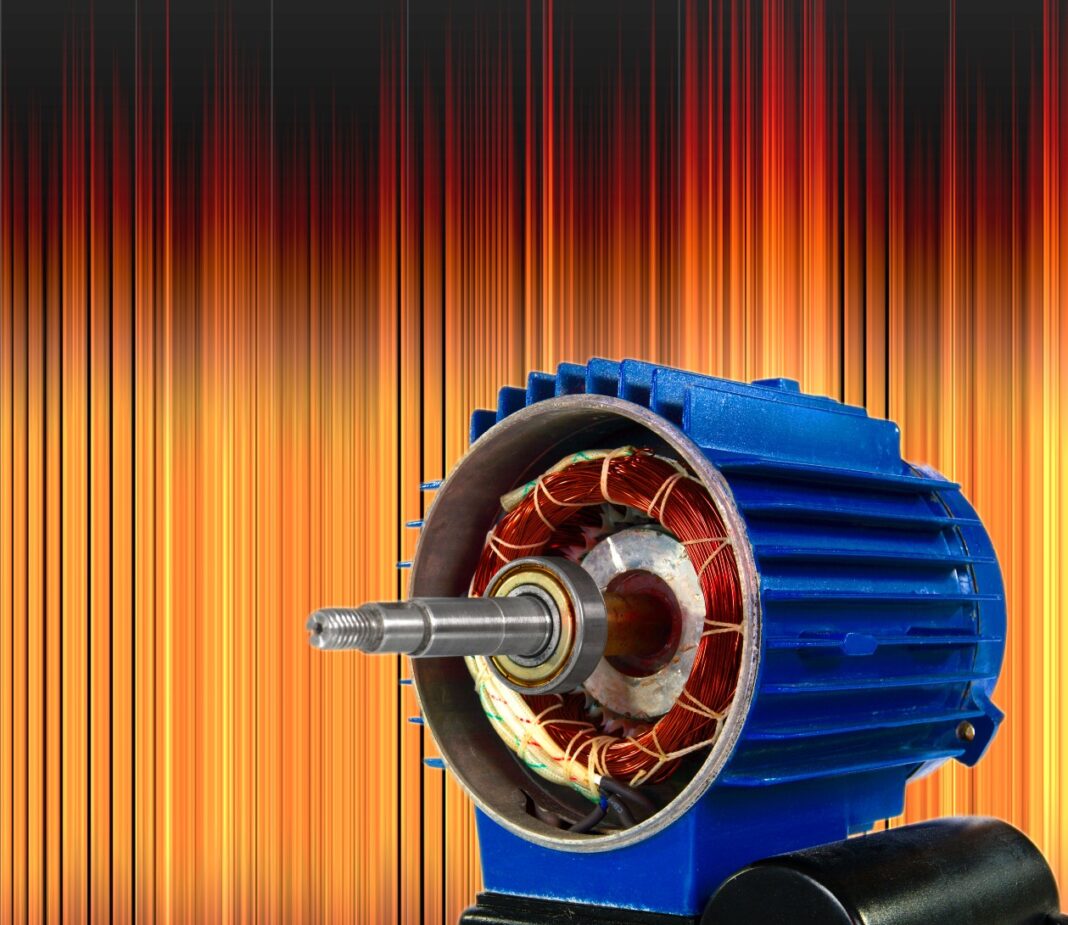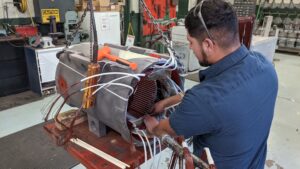What you should know about Motor Vibration?
Vibrational problems within your motor will cause a myriad of issues for your business, your motor, and your motor’s driven application. To help your equipment last as long as possible, and to avoid unscheduled downtime, vibrational issues need to be addressed as soon as they are identified. In this article we will go over some of the most common causes of vibration in your motor and what effects it can have on your equipment (and your bottom line) if not addressed quickly.
Causes
Misalignment
Alignment issues between your motor and your driven application play a large part in creating harmful vibrations. Making sure that you don’t have any angular or parallel misalignment at the time of initial installation is key to preventing vibrational issues with your motor in the future.
Belt driven alignment issues are another area of misalignment that can be fixed fairly easily. Poor belt alignment creates too much axial load and will over tension the belts, thus putting too much radial load on the bearings. Be sure to set belt tension to the manufacturer recommended range to prevent over tensioning.
Poor Foundation
Your foundation should be able to support your motor’s weight, withstand its torque force, and have the proper vibration dampening abilities. Your foundation should always be rigid and oversized to best achieve this. There are a few different foundations/bases to choose from including; but not limited to: concrete, steel mounted on concrete and sliding bases. Concrete foundations should be level and provide ample structural stiffness. Steel bases should do the same as a basic concrete foundation, and also be set in grout and be securely anchored. Sliding bases used for belt adjustment must rigidly secure the motor to prevent vibration.
Imbalance
Imbalance is, at its most basic definition, a spot on the rotating component of the motor that is heavier than the other areas. This causes centrifugal forces to present themselves and cause unwanted vibration (think of a washer with an unbalanced load). An imbalance can be caused by casting or weight distribution issues, dirty fan blades, or missing balance weights. Imbalance is a seemingly small problem that can lead to larger issues if left unaddressed.
Looseness
Looseness in any area where two separate parts come together will create vibration in your motor. Make sure that all bolts are tight, no parts are moving that shouldn’t be, and your motor’s feet are securely anchored to your foundation to prevent any connections from being shaken loose during operation.
Soft foot is when the feet of the motor are not secured correctly to its foundation or base; either because of loose bolts or angular misalignment of the feet from manufacturing. This can cause twisting of the motor, which will shorten its life and cause damage to its driven application. To prevent soft foot, be sure to inspect the feet of the motor before installation for any misangulation, mount the motor on a foundation that is level and can support its weight and torque forces, and tighten all bolts to manufacturer recommended parameters. Shims may be used to correct soft foot, but are not preferred. Using too many shims can lead to “sponge foot” where the vibrational patterns of your motor are absorbed by the shims instead of the concrete foundation and don’t give you the ideal level of vibration dampening.
Wear
As motors age, parts will be worn to the point of breaking. If you are noticing vibration in your motor but the alignment, belts, foundation, and feet have been checked for obvious issues, the next step is to look inward. Have any of the fans broken off? Are there any pieces missing? Any small change in the innards of your motor can cause imbalance and unwanted vibration.
Effects
Noise
Vibration is defined as a frequency in the range of 1 kHz or less. Anything above that threshold is defined as audible noise. Vibration, when left to its own devices, will begin to destroy your motor from the inside out. Noise will accelerate the problems that come with vibration, as well as cause a safety concern for your employees.
Safety Issues
When your equipment is not running correctly, you are at an increased risk for catastrophic failure of equipment. A small part that wiggles loose due to the vibrations in your motor could be the cause of a spark that starts a fire. Audible noise from unaddressed vibration can cause hearing loss. Vibration needs to be addressed before you have a safety hazard on your hands.
Unscheduled Downtime
When issues caused by vibration cause your equipment to fail, unscheduled downtime will occur. And we all know, time = money. When you are waiting a week for new parts or possibly even longer for a new motor to arrive, you will wish that you had paid more attention to the vibrational patterns of your motor during periodic maintenance.
Accelerate Wear
Vibration will accelerate wear in your motor and the machinery it drives. When things are not working in equilibrium, certain parts of your motor will become more stressed than others due to an uneven workload, and cause them to break down more quickly. Vibration can also affect the insulation of your wiring, cause your lead wires to become brittle and break, and cause brush sparking at commutators or current collector rings.
This article is based off our EMC Webinar: Getting the Most out of Your Electric Motor
Got More Generator Questions? We Can Help!
Call 800-595-5315 Or Connect With Our Expert Technicians Here:
Other Articles
- Critical Spare Planning
- The Three Most Common Externally Caused Motor Failures
- Remedies For Common Motor Winding Failures



Gary has 30+ years of experience at Energy Management Corporation working in all aspects of motor and mechanical repairs. In his extensive career, some of the interesting projects he has worked on include Hoover Dam hydro generators, Utah power sub stations, harmonic filters for VFDs, and motor for the Buckeye Bullet that set the land speed record for electric car.







